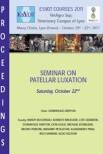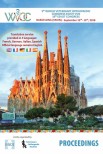Objective: To determine the effect of Kirschner wire (K-wire) grip location on bend angle, bend radius, and torque when performing a Z-bend technique.
Study design: Experimental study.
Sample population: Ten samples at each of five grip locations for each of three K-wire diameters.
Methods: K-wires of three diameters (0.9, 1.1, 1.6 mm) were drilled into PVC pipe, and a Jacob's chuck was used to bend the wires at five periodic grip locations (distance from the bone model). Torque, bend angle, and bend radius were determined for each sample. Outcome variables were statistically analyzed by grip location to determine significant relationships.
Results: A grip location of 2.0 cm in the 0.9 mm K-wire group minimized bend angle (mean ± SD: 75.92° ± 0.81) and bend radius (2.89 mm ± 0.08). A grip location of 3.0 cm in the 1.1 mm K-wire group minimized bend angle (72.88° ± 0.98) and bend radius (2.47 mm ± 0.20). A grip location of 3.0 cm minimized bend angle (74.38° ± 1.93) and bend radius (2.71 mm ± 0.27) in the 1.6 mm K-wire group. Torque at these grip locations for the 0.9, 1.1, and 1.6 mm K-wires was 6.50 N-m ± 0.0, 11.00 N-m ± 0.0, and 19.05 N-m ± 0.16, respectively.
Conclusion: Bend angle and bend radius can be minimized by bending K-wires at specific grip locations, though torque is not minimized at these locations. Clinical significance These findings provide an evidence-based recommendation of where surgeons should grip K-wires when bending them.









